Who doesn’t love a solid, classic, diesel powered truck? Really, does anyone? This 1969 Jeep Gladiator is an awesome find in great survivor condition. Having originally resided in California, this Jeep was converted to Diesel and then promptly placed into storage. Around 2013, the Jeep was sold and made its way to Pennsylvania. After its arrival to its new home the engine received a rebuild. Listed as running and driving very well, this unique Jeep is certainly an attention grabber. Currently bid up to $9,000, our minds race to think of what this awesome Jeep will sell for. Find it here on eBay out of Lancaster, Pennsylvania. Thanks to Mike H for the submission!
You are likely scratching your head wondering “what engine is this, and why is the intake so low on the engine?” Well, to give a hint it’s a supercharged 3 cylinder two stroke diesel. Can you guess now? Okay, this is a Detroit Diesel 3-53 supercharged two stroke diesel engine. This engine makes 200 ft/lbs of torque just above idle speed. The Detroit Diesel is mated to the factory T-18 Heavy Duty 4 speed gear box with a 2 speed overdrive box. The drivetrain is all business in this Jeep, but some creature comforts are included with this Jeep including air conditioning, and power steering.
The interior on this Jeep is clean for an old truck. The carpeting and seat look great, as do the door panels.
The Dash is lovely and is in untouched condition. The original Jeep emblems are intact, and the factory installed Jeep radio is even present. There are some auxiliary gauges down low on the dash that are tastefully hidden, but apparent to the driver. The carpet looks very plush, and the interior looks to have no sun fade damage. The exterior of this Gladiator is nice. Wearing a lovely shade of brown the paint is decent, with no fade or severe damage. There are some scratches and dings to be found, but this is likely one of the nicest surviving Jeep pickups you will see. The chrome and trim work is nice, and the wheels and bumpers looks nice as well. There is no rust to find on this truck other than the truck bed itself. The rubber mat over time likely held moisture against the bed causing some surface rust. There appears to be no rot, and that the bed can be managed over time, or one could add a rust inhibitor. There is some minor denting at the end of the bed by the taillights, and on the tailgate. The only thing we aren’t really crazy about is the smoke stack, but we think we could learn to live with it.
Not perfect, but a very nice survivor with an interesting engine conversion. This would be a fantastic vintage utilitarian vehicle, or it would be great for towing your smaller vintage campers. What would you do with this Diesel Gladiator?






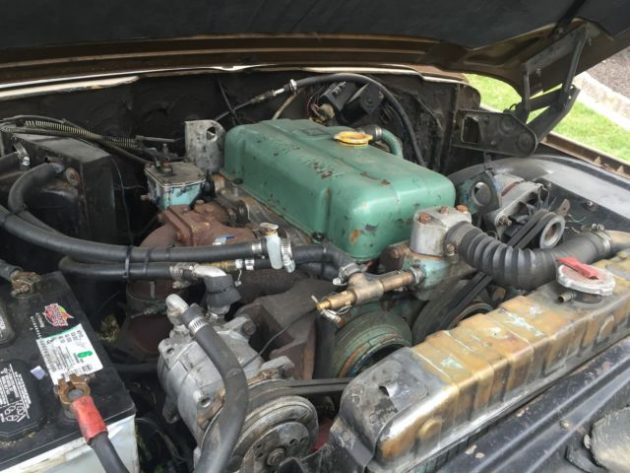

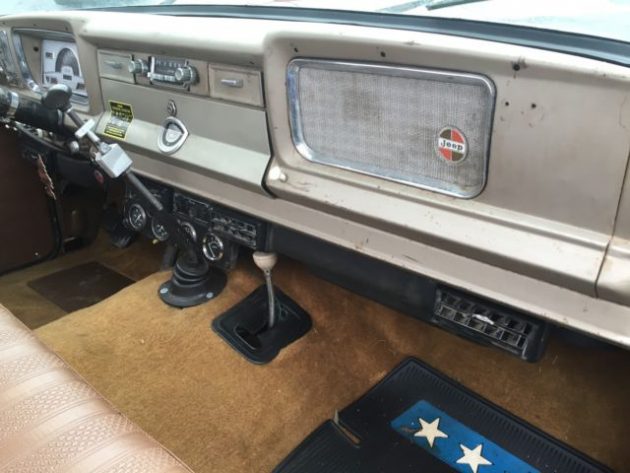

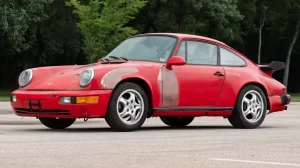
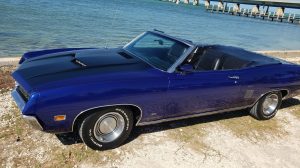
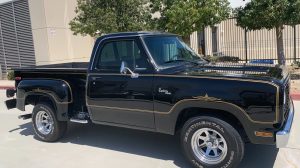



You,,have,,got,,to,,be,,kidding!!! I don’t know where to start. A 3 cylinder Detroit? Good heavens, what a poor choice for an engine. I really like the truck. Seems these late 60’s Jeep pickups still retained some of the Kaiser quality, before the AMC bugaboos took over, but to power it with one of the most worthless powerplants on the planet, has me scratching my head. As a truck driver for 35 years, I spent plenty of time behind one in trucks and in various construction equipment and it’s true, they really do convert diesel fuel into noise. Not to say, I haven’t seen some runnin’ Detroits. But they weren’t the in-line variety, more like the V’s ( V-12, to be exact, the buzzin’ dozen). Sorry, when it comes to 2 cycle Detroit’s, I was there in their heyday, I know what I’m talking about. Great truck, but I’d remove the boat anchor motor right away.
Hmm, I thought for sure the “thumbs” would gone the other way ( thumbs aren’t so bad now when they agree, I know) Some may not know why an engine like this is a poor choice. The 2 cycle Detroit is and might have been designed as a marine application or stationary motor ( like turning a generator at a carnival) and for that they are adequate. The 3, indicates how many cylinders, the 53 indicates the displacement of one cylinder, and if it had a V, well, obviously, a V type ( 8V-71, V8 and 71 cubes/ cyl, or 568) This being only 159 cubic inches and about 75 hp. just isn’t enough here. The problem in a road application, is like all 2 cycles, they have a very small power band, usually best with the “needle against the pin”, meaning, running the motor at redline,( with foot to the floor) usually, around 23-2400 rpms. As soon as a hill comes up,( with a heavy load) and the rpm’s drop even by a few hundred, it falls off fast, requiring a downshift, to keep the rev’s up ( and the ensuing noise). This can get awfully annoying, and put any newer driver in a 2 cycle Detroit powered truck today, and I’m sure they’d quit before noon. The upside of these motors, if any, are they are easy to rebuild, and modern gasket sealants can make them somewhat leakproof, but there’s still that annoying noise and low power issue. The Cummins, even the 4 cylinder would have been a much better choice, but may not have been available when this truck was built. Oh, one more thing, you don’t want a down pipe ( or “weed burner”) exhaust with a 2 cycle diesel, trust me.
I do not think they had that many choices of diesel power plants when they did the conversion. Also back then farmers used what was laying around but in all its a great start and has a diesel registration. I would love to know which 2spd overdrive was used.
Why would you live with the smoke stack if didn’t like it? It’s not a big job to reroute the exhaust under the truck.
the 53-71-92 series where good engine used by the goverment and industrial for many years, still have a 3-53 engine,
I dig it. Why ask why?
Having been around a lot of Detroit Diesels in a city bus fleet mostly 671’s in lines and the V-8 871’s i kind like em not sure on this one but could be fun i like it !
One of the funnest trucks that I ever drove was an old Pete with its two stroke joke, and a sloppy old 10speed that you couldn’t help but find a gear. I asked the farmer that owned it he said that his guy has a one bay shop, and has worked on them since they were new. I don’t know what he did, but that old girl would sing.
I too drove several trucks with these 2 stroke Detroit diesels, they used more oil than they covered miles. If you didn’t stay within the 2 or 3 hundred rpm power band they would fall flat on their face. I’d swap it for an old jeep v8 or a small block Chevy. I like the truck though.
Sometimes it is more about the rumble,stink,soot and blower whizz than clean power. The folks at Harley Davidson have made a pretty good living at selling noise and vibration. I dig it.
Negative on the smoke stack. Unless you are a 19 year old redneck kid trying to roll coal like an asshat. It’d be the first thing to go.
X2
I had a ’66 J3000 with the 327 V8 and the four speed. Not sure why the diesel.
I love these trucks. I would have gone with a Cummins.
The Deaftroit diesel is probably a great conversation piece, and tolerable for short trips.
Oh Jay Cee who would put one of the noisiest dirtiest smoking nerve bomb 3-53 in any vehicle? Guaranteed to wake the dead. I still have tinnitus from the 6-71 I drove in ’79. FYI the blower was not a supercharger. It only pushed the spent exhaust gasses out of the cylinders. Once used on a 4 stroke engine they were a supercharger
I would put a 258 c.i. inline six.
I love the front end!
I think they could’ve gotten just as much for it,
if they left it stock.
If they have not changed the axle ratios this thing will have a top speed of about 40 mph.
I don’t know anything about this engine so I’ll have to take the words of others on its performance levels. If it is the turd that you guys are saying it is I would not want this truck. It sounds like they have to have all kinds of rpm to get any power out of this thing. So my question to you guys is this a short stroke engine with a light fly wheel. It seems so just from what I’m hearing.
I know Jeep put Perkins supercharged 3 cylinder 2 stroke diesels in the military FC trucks
How the devil did I miss this post? Oh well, I’m here now….
Best way to run a Detroit? Slam your finger in the door before you start it up. Then you’re ready to go. I remember back in the 60s and 70s when GM offered the 3-53 door stop in the P-30 step vans. It was actually good for door to door deliveries although I wouldn’t recommend it for a drycleaning service unless you wanted your customers’ dress clothes to smell like diesel exhaust. Like Howard said, the Cummins would’ve been a much better choice for something like this but the Cummins B-series was many years down the road. I saw lots of Ford 3/4 ton trucks with 4-53 engines in them. I believe there was a guy in the Flathead Valley near Kalispell, MT who converted them. Not too interested myself. I drove a 2-stroke joke in an 18-wheeler and I’m sure my hearing was damaged….
I was with a company that built railcar movers with these engines in the early 80s and that was long past when logic and technology should have dictated a switch to better motors. The inertia behind continuing to use these was tremendous from the guys having to maintain them and the guys looking at bottom line numbers like downtime and maintenance costs — not the ones in the cabs of the vehicles where we recorded 90+ DB when those suckers were in full song. Basic and pretty bulletproof but noisy and fuel hogs compared to the 4 cycle units. The turbo units were slightly better. Would be at the bottom of my list for any kind of street vehicle motor swap. The “supercharger” really was just a blower that improved the cylinder scavaging by forcing the intake air into the cylinder.